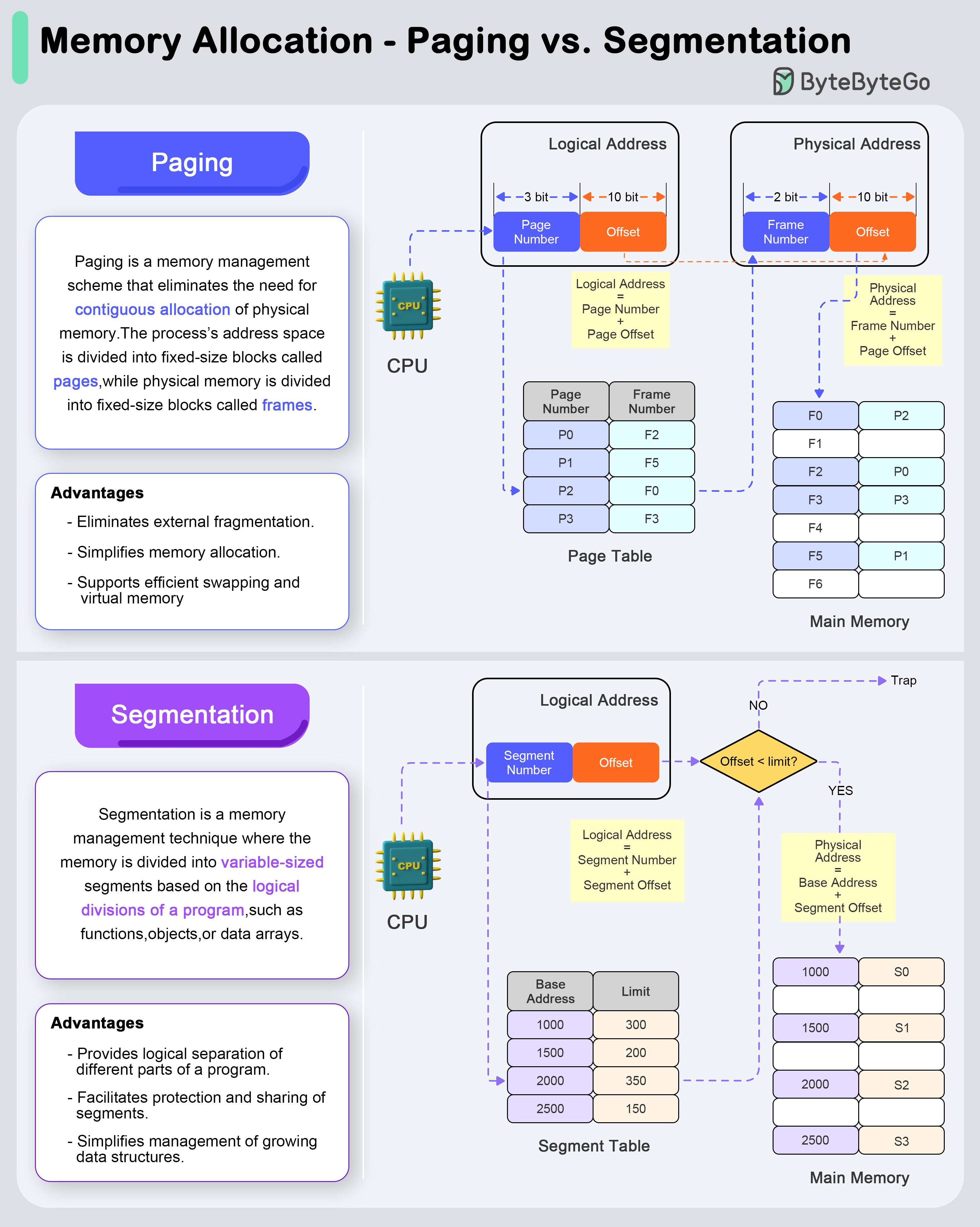
Paging
Paging is a memory management scheme that eliminates the need for contiguous allocation of physical memory. The process’s address space is divided into fixed-size blocks called pages, while physical memory is divided into fixed-size blocks called frames.
The address translation process works in 3 steps:
- Logical Address Space: The logical address (generated by the CPU) is divided into a page number and a page offset.
- Page Table Lookup: The page number is used as an index into the page table to find the corresponding frame number.
- Physical Address Formation: The frame number is combined with the page offset to form the physical address in memory.
Advantages:
- Eliminates external fragmentation.
- Simplifies memory allocation.
- Supports efficient swapping and virtual memory.
Segmentation
Segmentation is a memory management technique where the memory is divided into variable-sized segments based on the logical divisions of a program, such as functions, objects, or data arrays.
The address tranlation process works in 3 steps:
- Logical Address Space: The logical address consists of a segment number and an offset within that segment.
- Segment Table Lookup: The segment number is used as an index into the segment table to find the base address of the segment.
- Physical Address Formation: The base address is added to the offset to form the physical address in memory.
Advantages:
- Provides logical separation of different parts of a program.
- Facilitates protection and sharing of segments.
- Simplifies management of growing data structures.
